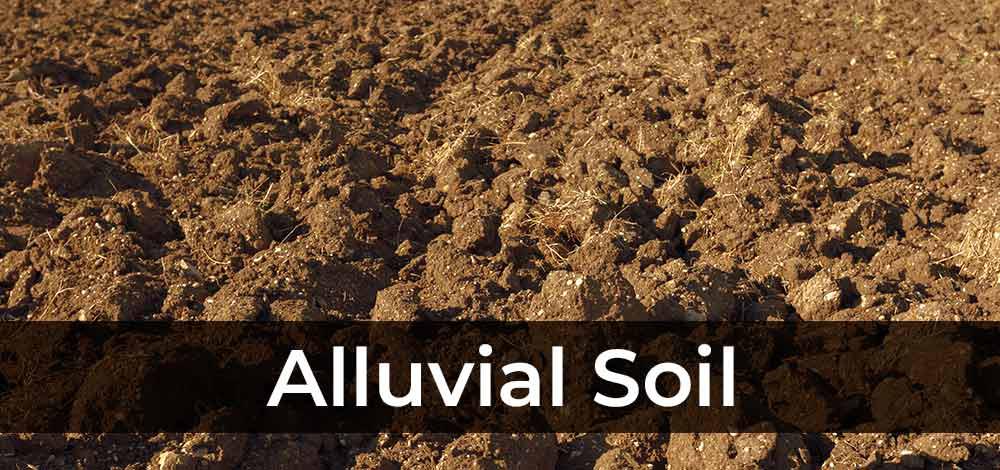Why does Alluvial Soil Differ in Texture?
Last Updated :
02 Aug, 2023
Sediments transported by rivers, streams, and other bodies of water are deposited to form alluvial soil. With around 35% of India’s total land area covered by it, it is one of the most productive soils on the entire planet. The Indo-Gangetic plain and river deltas in Northern and Eastern India are covered in alluvial soil.
Although this soil is incredibly productive and capable of supporting a variety of crops, its texture, structure, and composition change depending on the environment.

Alluvial Soil
Alluvial Soil Differs in Texture
Depending on the sediment source and deposition environment, alluvial soil texture can range from sandy to clayey. Sandy soil, which is abundant in fast-moving water areas such as river banks, includes larger-sized particles that allow for proper drainage and aeration. Clayey soil, on the other hand, is more frequent in low-lying river basins and has smaller particles that may store water and nutrients for longer periods of time. It erodes less easily than sandy soil.
Depositional Environment
The depositional environment influences the structure of alluvial soil. The layering of fine sediments on the surface and coarser sediments on the bottom of river valleys results in well-structured soil that is simple to till and offers robust support for plant roots. Yet, in river deltas, high saline levels, and frequent sediment deposition can lead to poorly structured soil.
Source of the Sediment
The source of the sediment also has an impact on the composition of alluvial soil. The deposition of Himalayan sediments produces soil rich in minerals such as potassium, phosphorus, and calcium. The soil of the Indo-Gangetic plain is rich in organic matter and can sustain the development of rice, wheat, and cereal crops. Because the soil of the Ganges, Brahmaputra, and Godavari river deltas is rich in clay and sand, it is perfect for cash crops like cotton, jute, and sugarcane.
Existence of Alluvial Fans
The existence of alluvial fans influences the texture of alluvial soil. At the base of mountain slopes, when rivers and streams flow into valleys, alluvial fans emerge. The resulting cone-shaped landform is frequently nutrient-rich, with sandy, well-drained soil appropriate for growing vegetables, fruits, and flowers.
Types of Alluvial Soil
Bangar and Khaddar are the two primary kinds of alluvial soils:
- Bangar Soil: It is found at higher elevations in river valleys and differs from Khaddar soil in its coarser texture, higher acidity, and lesser fertility. Because of its elevation location, it is frequently found on river terraces and is well-drained. It is, nevertheless, more prone to erosion than Khaddar soil. Bangar soil is ideal for producing crops such as wheat, barley, and millet, which can endure a drier and less fertile climate.
- Khaddar Soil: On the other hand, is found in river valleys’ lower regions and has a finer texture, better fertility, and lower acidity than Bangar soil. It is generated by flood deposits and is commonly found in river floodplains. Khaddar soil is well-irrigated and very productive due to its closeness to the river, making it suitable for producing water-loving crops like rice and sugarcane. Since the riverbanks protect it, khaddar soil is less prone to erosion.
Alluvial Soil Classification Based on Texture
- Sandy alluvial soil is coarse and well-draining because it is mostly made up of sand-sized particles. It may also contain some silt or clay, but not enough to change the texture appreciably. Sandy alluvial soil is commonly found around river mouths or in places with high water tables.
- Silty alluvial soil is composed primarily of silt-sized particles, giving it a smooth, fine feel. Since the tiny particles store water and nutrients more efficiently, it is frequently more fertile than sandy alluvial soil. Silty alluvial soil is frequent in floodplains and other regions where slow-moving water deposits silt.
- Clayey alluvial soil is thick and slow-draining because it is mostly made up of clay-sized particles. Since the tiny particles might hinder root development and water penetration, it is frequently less productive than sandy or silty alluvial soil. Clayey alluvial soil is widespread in locations with steep slopes or heavy rainfall, where sediment is deposited by flowing water.
- Gravelly alluvial soil has a large concentration of gravel-sized particles, making it well-draining yet frequently infertile. It is most typically seen in high-energy water flow locations, such as mountain streams and rivers, where heavier silt particles are swept downstream. Although gravelly alluvial soil is frequently unsuitable for agriculture, it can be utilized for building and other uses.
FAQs on Alluvial Soil
Q 1. What is Alluvial Soil?
Answer-
Alluvial soil is made up of sediments deposited by rivers, streams, and other bodies of water. It is one of the world’s most productive soils, accounting for around 35% of India’s total land area.
Q 2. Alluvial Soil is found in which state?
Answer-
Alluvial Soil is mostly derived from sediments that are deposited in the river Ganga, which includes states ranging from Punjab in the west to Bengal and Assam in the East.
Q 3. How is Alluvial Soil formed?
Answer-
The formation of Alluvial Soils is due to the silt deposited by the Indo-Gangetic-Brahmaputra rivers.
Share your thoughts in the comments
Please Login to comment...